How Peer Role Models Contribute to Center-Based ABA Therapy Success
The Transformative Power of Peer Role Models in ABA Therapy
Understanding the Impact of Peer Role Models
In the realm of Applied Behavior Analysis (ABA) therapy, particularly in center-based programs, peer role models serve as a pivotal component in enhancing the learning and social experience for children with Autism Spectrum Disorder (ASD). This article delves into the transformative effect these peer interactions have within ABA settings and the broader implications for educational and social development.
The Core Role of Peer Models in ABA Therapy
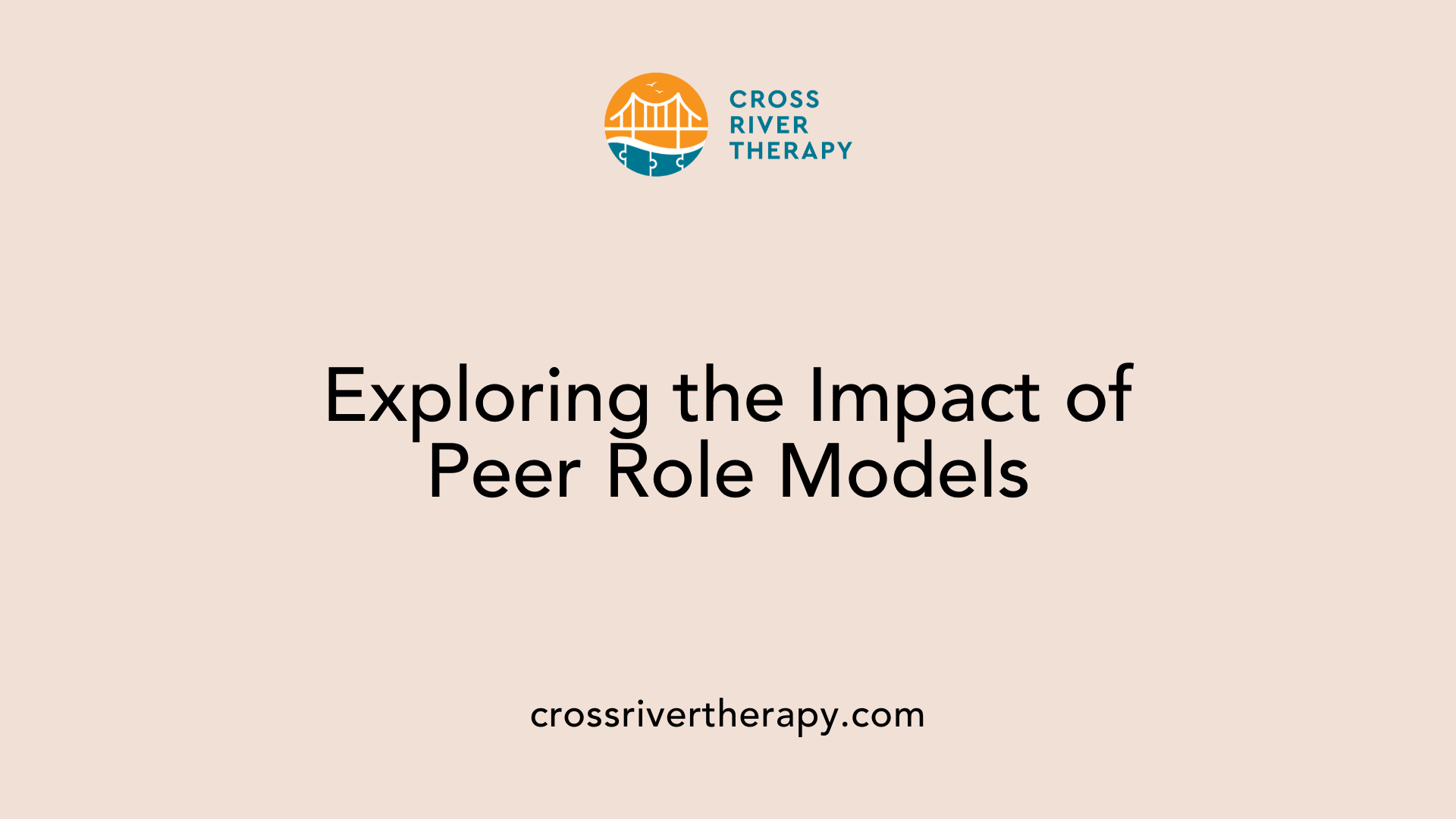
What is the role of peer role models in center-based ABA therapy?
Peer role models in center-based Applied Behavior Analysis (ABA) therapy are instrumental in fostering social skills for children with Autism Spectrum Disorder (ASD). Their presence provides children with positive behavioral examples that promote social learning. The interactions encourage children to observe, mimic, and practice appropriate communication styles in a supportive setting.
In these environments, typical peers engage the children with ASD, facilitating natural opportunities for interaction. Research demonstrates that social communication skills improve when children learn alongside their peers. This mentorship often leads to enhanced social integration within communities, as children with ASD develop meaningful friendships and connections.
Impact on social skills
The incorporation of peer models significantly enhances vital social skills. Children learn to initiate conversations, share, and take turns, which are especially important in building friendships. Through repeated social interactions with peers, children practice understanding social cues. This ‘peer role modeling’ encourages behaviors like cooperation and empathy, which are crucial for their overall development.
Moreover, peer models exhibit higher quality friendships and greater social network centrality. They often receive friendship nominations from classmates, indicating their acceptance and connection within the social fabric of the classroom. This dynamic not only assists children with ASD in making friends but also reduces feelings of loneliness.
Influence on academic outcomes
Engaging with peer role models can lead to improved academic outcomes as well. The social skills that children develop through interaction can translate into enhanced classroom participation. Collaborating in group activities promotes communication, cooperation, and problem-solving abilities—all necessary traits for academic success.
Overall, the integration of well-trained peer role models in ABA therapy provides children with an enriched learning environment that supports both their social and academic growth.
Enhancing ABA Therapy Through Peer Interactions
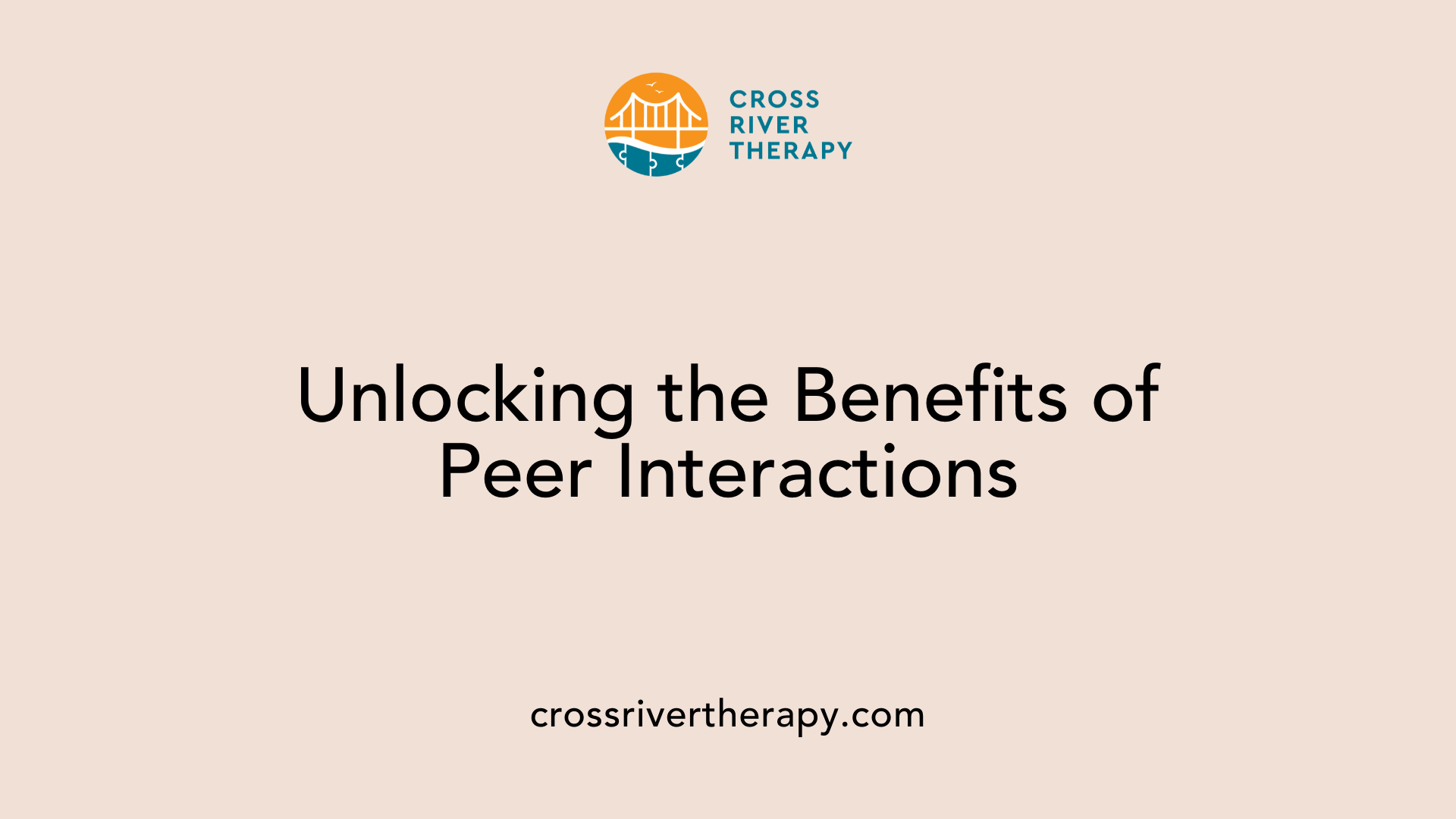
Benefits of Peer Interactions
Peer interactions play a vital role in improving the effectiveness of Applied Behavior Analysis (ABA) therapy for children with Autism Spectrum Disorder (ASD). The structured environment of a center-based ABA program often includes opportunities for children to engage with typical peers. This setting facilitates natural contexts where children can practice social skills that might otherwise be difficult to develop.
Key benefits include:
- Natural Learning Environments: Engaging with peers allows for real-life practice of concepts like turn-taking and sharing.
- Enhanced Communication: Frequent conversations with peers contribute to developing language skills and enhancing overall communication.
- Emotional Support: Positive peer interactions can reduce feelings of isolation and loneliness often experienced by children with ASD.
Improvement in Social Skills Through Peer Exposure
Research indicates that children with autism paired with typical peers—referred to as peer models—have stronger social connections. These peer models often have higher social network centrality and exhibit greater friendship quality, which underscores their effectiveness in fostering social skills among children with ASD.
Critical findings include:
- Role Modeling: Typical peers serve as role models, and the children with ASD often mimic desirable social behaviors.
- Mutual Acceptance: Peer-mediated interventions facilitate social connections, encouraging friendships that provide emotional and social reinforcement.
- Increased Social Competence: Interaction with peers enhances not only social skills but also the understanding of social cues crucial for successful peer interactions.
The collaboration between trained professionals and these peer models enhances the therapeutic experience, enabling children with ASD to initiate friendships and develop essential collaboration skills necessary for their academic and social success.
Understanding Peer-Mediated Interventions
What are peer-mediated interventions, and how do they benefit social skills development in children with autism?
Peer-mediated interventions (PMIs) consist of strategies designed to empower typically developing peers to assist children with autism spectrum disorder (ASD) in honing their social skills through positive interactions. This collaborative approach makes use of peer relationships to create a more adaptive learning environment for children with autism.
These interventions focus on crucial social competencies that children with ASD often find challenging, such as:
- Initiating conversations
- Sharing
- Understanding and responding to social cues
Research highlights moderate evidence indicating that PMIs significantly enhance these important social skills among children with autism. The positive effects of these interventions are not limited to school settings; they extend into clinic visits and home life, effectively broadening the social landscape for children with ASD.
Programs like Circle of Friends exemplify successful PMIs, cultivating peer acceptance and nurturing authentic friendships. Such initiatives are critical in altering school culture, ensuring that children with autism feel included and supported by their peers.
Additionally, PMIs positively impact the social networks of children with ASD, enhancing overall social integration. By establishing meaningful connections, these interventions foster a more inclusive environment, ultimately benefiting all involved. When peer interactions are guided and structured by trained professionals, children with autism can effectively develop social skills, paving the way for more fulfilling social engagements and relationships.
The Influence of Typically Developing Peers
How do typically developing peers influence therapy outcomes and social development in children with autism?
Typically developing peers are invaluable in improving therapy outcomes and social development for children with Autism Spectrum Disorder (ASD) through various peer-mediated interventions (PMIs). These interactions offer real-life scenarios where children with ASD can observe and imitate effective social behaviors and communication techniques.
Research indicates that children with ASD who engage with typical peers show remarkable enhancements in their social skills. This includes increased frequency of social initiations and greater ability to communicate effectively. Such connections not only contribute to the growth of children with ASD but also boost the social capabilities and friendship quality of their typically developing counterparts, cultivating an inclusive educational environment.
Key Benefits of Peer Interactions in ABA Therapy:
- Enhanced Social Skills: Typically developing peers serve as role models, facilitating the learning of social norms and cues.
- Improved Communication: Children with ASD benefit from observing and mimicking effective communication methods demonstrated by their peers.
- Increased Engagement: Working in peer-focused groups encourages proactive social engagement and reduces feelings of isolation.
Furthermore, the structured environment of center-based ABA therapy allows these peer interactions to flourish. Small group settings with trained professionals, such as Board-Certified Behavior Analysts, ensure focused and individualized attention, leading to better integration of social skills practiced in therapy.
Promoting relationships between typically developing peers and children with ASD is thus essential not just for therapy improvement, but for fostering an enriched, cooperative atmosphere conducive to mutual growth in social and emotional skills.
Educational Benefits of Peer Role Modeling in Therapy
What are the educational implications of incorporating peer role models into behavioral therapy settings?
Incorporating peer role models into behavioral therapy settings yields substantial educational benefits. By providing relatable examples of positive behaviors and social skills, peer models enhance the learning environment. Research has shown a strong correlation between engagement with peer role models and improved educational outcomes, particularly in the case of children with Autism Spectrum Disorders (ASDs).
One major advantage of this approach is the motivation it instills in students. Children interacting with peer models often exhibit increased interest in educational activities, leading to better participation and retention of information. In settings like center-based ABA therapy, where structured learning is paramount, these connections deepen social learning opportunities and reinforce educational achievements.
How do peer role models influence learning?
Peer role models not only promote direct learning of social skills but also foster a culture of support and acceptance among peers. The presence of typically developing peers in therapy can empower children with autism to engage in conversations, share experiences, and practice taking turns—essentials for effective social interactions.
Additionally, peer models can assist in creating an inclusive atmosphere, minimizing feelings of isolation for children with ASDs. They help build friendships and facilitate bonding, which benefits emotional well-being. The dual experience—receiving support and being seen as a role model—enhances both social competence for those with ASDs and contributes to a richer social network.
The table below summarizes the key educational and social enhancements provided by peer role modeling in therapy settings:
| Aspect | Educational Benefit | Social Benefit |
|---|---|---|
| Motivation | Increases interest in learning activities | Fosters peer acceptance and friendship |
| Social Skills | Facilitates the development of conversation and sharing skills | Encourages collaboration and turn-taking |
| Emotional Support | Reduces feelings of isolation and promotes emotional well-being | Enhances the quality of friendships |
| Academic Impact | Drives improvement in educational outcomes through social engagement | Satisfies psychological needs for connection and autonomy |
With tailored support from professional staff, peer role models play an instrumental role in bridging gaps in learning and socialization, making a powerful impact on overall development in therapy settings.
Structured Environments and Learning Opportunities
Why are structured environments crucial in ABA therapy?
Structured environments in center-based ABA therapy are crucial as they minimize distractions and allow for focused learning. This is essential for children requiring specialized therapy. Such settings facilitate effective engagement in therapy by offering controlled conditions where children can practice social interactions and develop vital skills.
Benefits of structured ABA environments
Center-based ABA therapy provides several benefits that enhance the learning experience:
- Reduced Distractions: The structured setting diminishes external stimuli that can hinder focus.
- Specialized Equipment: Facilities often include tools designed to support skill development, which can significantly improve therapy outcomes.
- Trained Professionals: Board-Certified Behavior Analysts (BCBAs) are present to tailor individual treatment plans based on each child's progress and needs, ensuring high-quality care.
Collaborative activities promoting social skills
Collaboration in a center-based environment also plays a crucial role:
- Group Interaction: Children engage in peer learning opportunities, enhancing their social skills through cooperative activities.
- Social Practice: Frequent interactions allow children to practice initiating conversations, sharing, and understanding social cues in a safe space.
- Peer Models: The presence of typical peers can further enrich social development by providing role models who facilitate friendship and help mitigate feelings of isolation.
In summary, the structured environment of center-based ABA therapy not only aids focused learning but also fosters essential social skills, significantly contributing to children's overall development.
Importance of Specialized Equipment and Resources
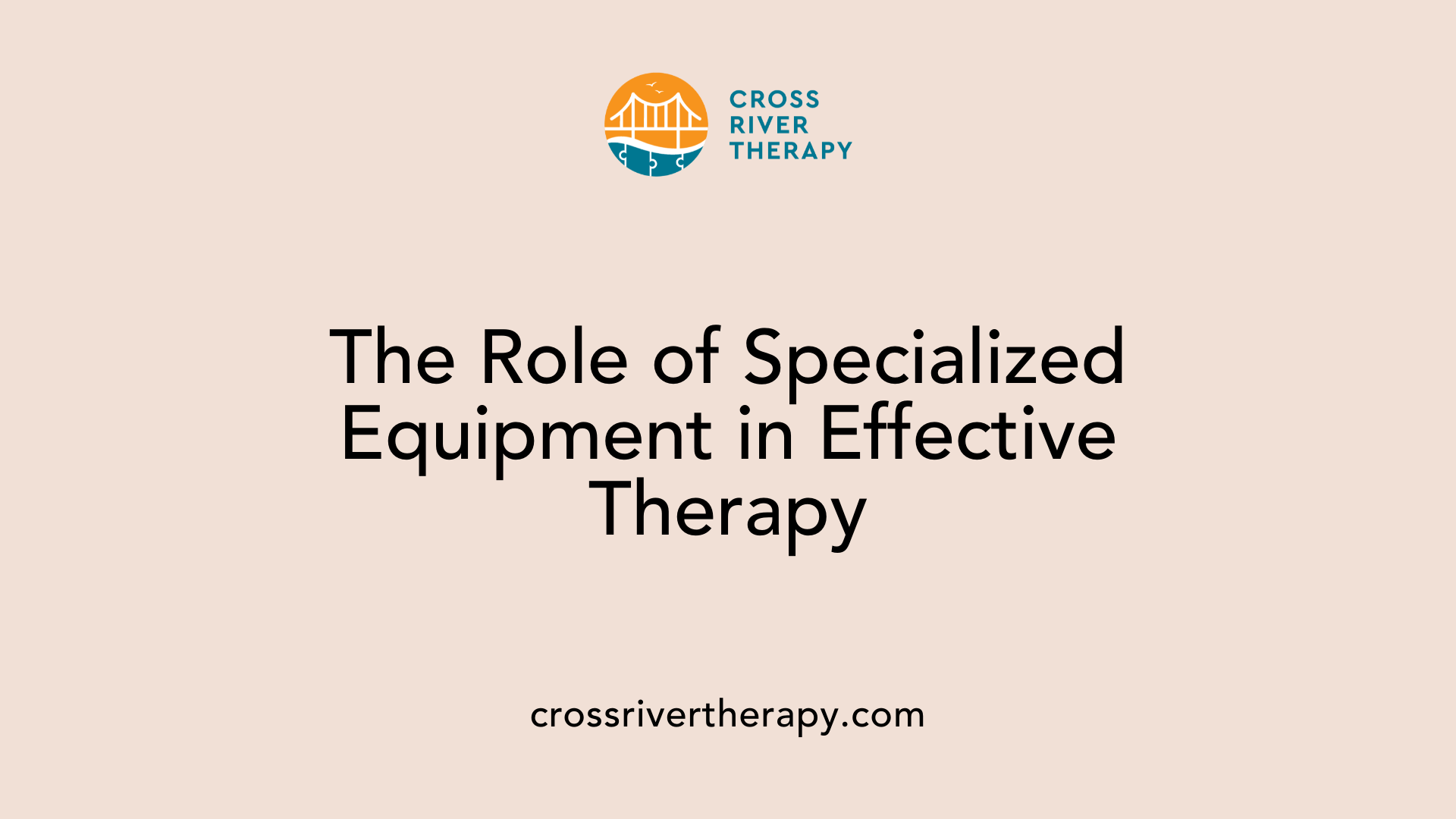
Role of equipment in ABA centers
The role of specialized equipment in ABA therapy centers cannot be overstated. These centers are equipped with various tools designed specifically for children with Autism Spectrum Disorder (ASD). This equipment enhances engagement and provides the necessary structure for focused learning.
- Structured Environment: The structured layout of ABA centers allows children to minimize distractions, which is essential for effective learning.
- Targeted Interventions: Resources available, such as visual schedules, sensory tools, and communication aids, enable therapists to implement individualized intervention plans tailored to each child’s progress.
Enhancement of therapy quality
The presence of specialized resources in ABA centers enhances the overall quality of therapy. With well-trained professionals like Board-Certified Behavior Analysts (BCBAs), children receive focused instruction and targeted assistance that ultimately contributes to effective skill development.
- Lower Teacher-to-Student Ratios: A typical characteristic of these centers is the lower student-to-teacher ratios, ensuring children receive more frequent, individualized instruction.
- Holistic Skill Development: The therapies are designed to improve not just academic skills but also crucial social skills through structured peer interactions and collaborative activities.
These elements combined significantly improve the effectiveness of therapy and help foster a supportive environment conducive to learning.
| Aspect | Center-Based ABA Therapy | Public School Programs |
|---|---|---|
| Equipment & Resources | Specialized tools and materials | Standard classroom resources |
| Teacher-to-Student Ratio | Lower ratios for individualized instruction | Higher ratios, less individual support |
| Social Interaction Level | Targeted peer engagement | General peer interactions |
| Professional Training | Specialized training for staff | General teacher training |
Specialized center-based programs stand out for their ability to incorporate these essential elements, making them an invaluable resource for children with autism.
The Role of BCBAs and Individualized Care
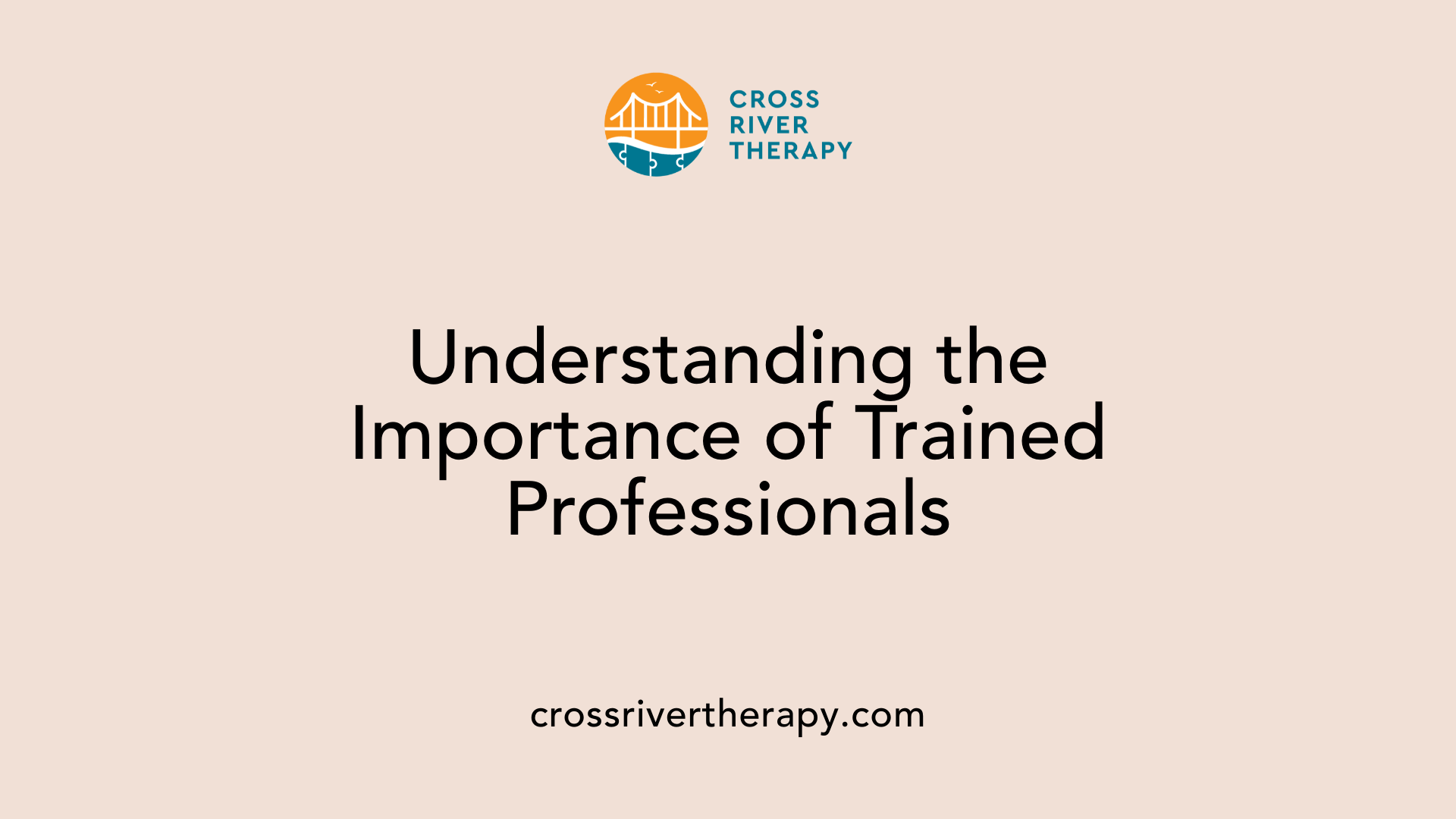
What is the significance of having trained professionals like BCBAs in ABA therapy?
The presence of trained professionals, such as Board-Certified Behavior Analysts (BCBAs), is vital in ABA therapy. Their expertise ensures that children receive high-quality, individualized care, tailored specifically to their unique needs.
BCBAs are skilled in assessing each child's progress, setting measurable goals, and modifying therapeutic strategies to enhance effectiveness. This individualized approach is critical, especially in structured environments like center-based ABA therapy, where focused learning is emphasized.
BCBAs' contribution to therapy
These professionals bring a wealth of knowledge about Autism Spectrum Disorders (ASDs) and implement best practices derived from ongoing research. Their training enables them to utilize specialized equipment and resources found in ABA centers effectively, making the therapy more impactful.
In addition to managing behavioral interventions, BCBAs facilitate social skills development through group activities, maximizing the potential for children to learn alongside peers. By fostering interactions, they help children practice communication, sharing, and collaboration—skills essential for social integration.
Tailored therapeutic interventions
The individualized care provided by BCBAs also means that interventions can be adjusted in real-time based on each child's responses. This flexibility is crucial for providing an appropriate level of challenge and support, thereby optimizing therapeutic outcomes.
Ultimately, the work of BCBAs in ABA therapy alleviates the myth that children with autism do not seek social interactions. With proper guidance and a structured approach, these children can thrive socially and academically, bridging the gap between their needs and mainstream environments.
The Power of Frequent Social Interactions
Practice of Social Skills
Frequent social interactions play a pivotal role in the success of ABA therapy for children with Autism Spectrum Disorder (ASD). In structured environments, like ABA centers, children can practice essential social skills in a controlled setting. They learn to initiate conversations, share resources, take turns in activities, and interpret social cues effectively. These controlled interactions are crucial as they lay the groundwork for successful peer role modeling, enabling children to adopt socially appropriate behaviors from their peers.
Controlled Social Interactions
The presence of peers in center-based ABA therapy creates an enriching atmosphere for collaborative learning. Trained professionals facilitate these interactions to ensure they are constructive and beneficial. Research indicates that children paired with typical peers, known as peer models, have better social connections and friendships. These peer models contribute significantly to enhancing the quality of friendships, which leads to a greater sense of belonging and acceptance within social networks. The structured approach of peer interactions in ABA therapy not only builds social skills but also enhances school readiness by instilling essential emotional support and cooperative skills necessary for academic success.
Community and School-Based Interactions
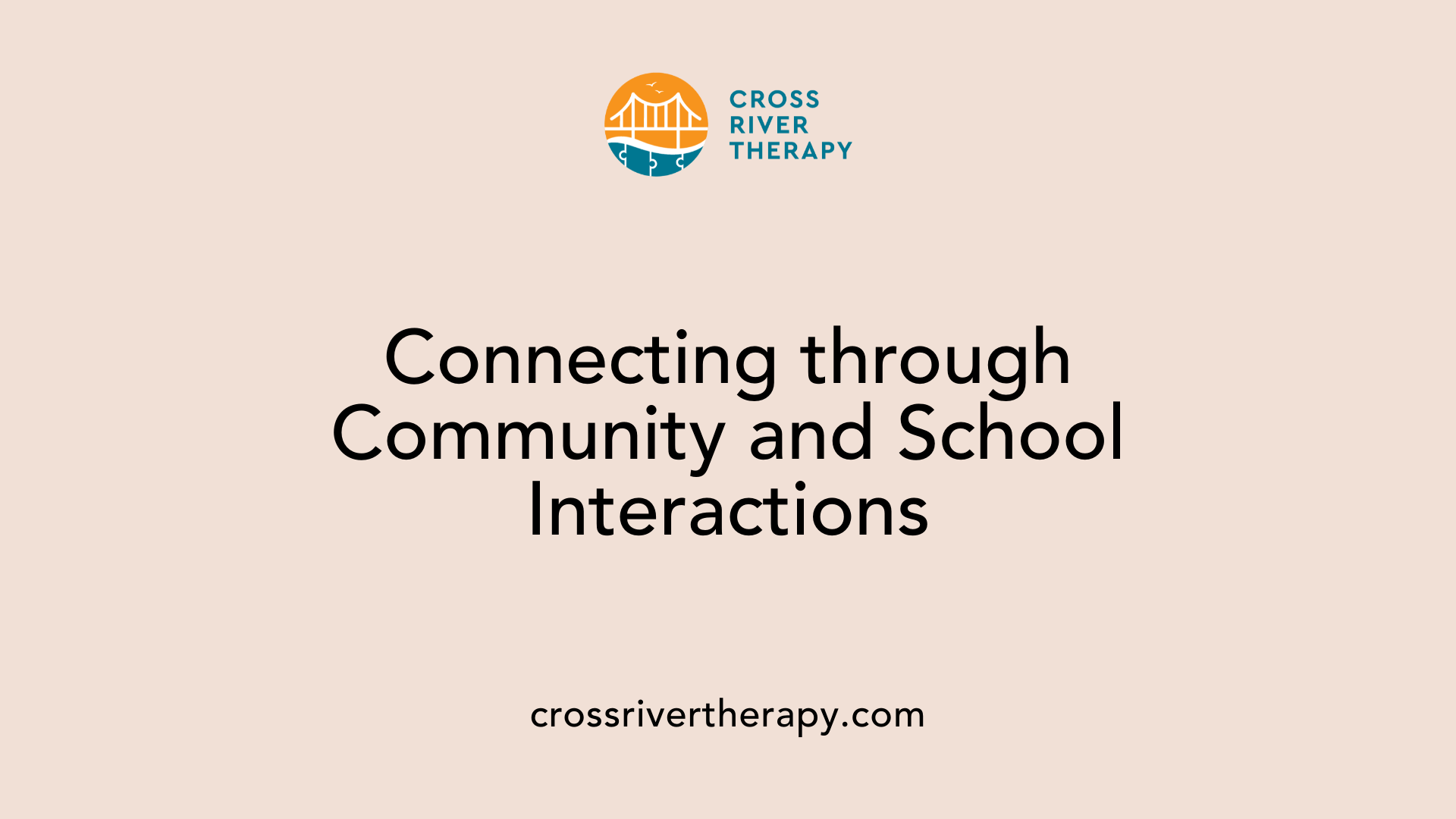
Why are community interactions important for children with ASD?
Community and school-based interactions are vital for children with Autism Spectrum Disorder (ASD) as they provide opportunities to engage with peers in familiar settings. These interactions not only strengthen social connections and reduce feelings of isolation but also promote social integration within the community.
The structured environment of center-based ABA therapy further enhances these social practices. With trained professionals, children can practice initiating conversations and understanding social cues in a supportive, distraction-free setting. This is crucial, as it allows them to develop the skills needed to navigate social complexities.
Additionally, peer training and buddy programs in public schools enable children with ASD to connect with typical peers, facilitating mentorship and deeper social interactions. This approach not only fosters collaboration and social learning but also encourages the development of enduring friendships, which play a pivotal role in emotional well-being.
In summary, interactions within both the community and school settings help children with ASD improve their social skills and adaptability, creating a foundation for successful integration and collaboration with their peers.
Training Peers for Effective Interactions
What role does peer training play in ABA therapy?
Peer training programs serve a crucial role in ABA therapy by equipping typically developing children with the necessary skills to engage positively with peers with Autism Spectrum Disorder (ASD). These specialized programs are designed to foster mentorship and social interaction, which are vital for the social development of children undergoing ABA therapy.
In a center-based environment, peer interactions are structured to reduce distractions and enhance focus. When peers are trained effectively, they model appropriate social behaviors, making it easier for children with ASD to practice communication skills, take turns, and interpret social cues. This collaborative learning not only bolsters the confidence of children with ASD but also encourages meaningful friendships.
Facilitating Social Interaction
The success of peer-mediated interventions hinges on selecting peer models based on their social competence. Research indicates that peer models, particularly those trained through structured programs, experience higher rates of social connectivity and quality friendships compared to non-peer models. They often receive more friendship nominations from classmates, showcasing their integral role within social networks.
Moreover, peer interactions lead to a comprehensive understanding of collaboration skills, significantly enhancing school readiness. When older siblings or peers initiate these interactions, they offer emotional support and serve as role models, contributing positively to the developmental landscape of children with ASD. Thus, peer training programs create a fundamental support system that empowers both children with ASD and their typically developing counterparts, promoting inclusivity in educational settings.
Centrality and Social Networks of Peer Models
Advantages of Peer Models in Social Networks
Peer models serve as an essential link in social networks, particularly for children with Autism Spectrum Disorders (ASDs). Research indicates that these typical peers not only have higher social network centrality but also enjoy better friendship quality than non-peer models. This advantage offers several benefits:
- Stronger Integration: Peer models are more integrated into their social circles, making them accessible allies for children with ASDs.
- Enhanced Acceptance: Their social adeptness often leads to increased acceptance from classmates, which can mitigate feelings of isolation.
- Leadership Role: Being perceived as socially competent, peer models can take on leadership roles, guiding their peers in social interactions.
Impact on Peer Status
The presence of peer models significantly impacts the social dynamics in the classroom. Not only do they receive more friendship nominations from classmates, but their companionship is also characterized by deeper connections.
- Less Loneliness: Peer models report experiencing less loneliness, suggesting that these children foster a sense of community among their peers.
- Quality Friendships: The depth of emotional support, companionship, and shared activities contributes to stronger friendship bonds.
- Mentorship Opportunities: Peer interactions serve as mentorship, allowing children with ASDs to learn crucial social behaviors effectively.
By leveraging the strengths of peer models in social networks, interventions can create more inclusive and supportive settings that facilitate social growth and development for children with autism.
Developing Social Skills for Academic Success
How do social skills contribute to academic success for children with autism?
Developing collaboration and social skills is essential for academic success among children with autism. ABA therapy effectively teaches these skills, aiding in school readiness by fostering social and emotional competencies, communication abilities, and problem-solving skills, all crucial for navigating academic environments.
In specialized ABA centers, children engage in structured learning that minimizes distractions. This focused environment allows for intensive programming with lower student-to-teacher ratios, enabling tailored, individualized instruction. The presence of trained professionals, including Board-Certified Behavior Analysts (BCBAs), ensures that therapy is adapted to each child's unique needs, maximizing the potential for growth.
Collaboration skills learned through ABA therapy are critical, as they empower children to work with peers, share ideas, and engage in team activities. Short, frequent interactions in these therapeutic settings help them practice essential social skills, such as taking turns, initiating conversations, and understanding social cues, which enhances their ability to integrate into classroom environments.
Moreover, peer training programs in public schools provide additional opportunities for typical peers to inspire and mentor children with Autism Spectrum Disorder (ASDs). These relationships help diminish feelings of isolation while improving emotional support, ultimately leading to better school readiness.
In conclusion, the combination of center-based ABA therapy and public school partnerships creates a robust framework for cultivating social skills that pave the way for academic success.
The Lasting Impact of Peer Role Models in ABA Therapy
Peer role models in center-based ABA therapy offer transformative benefits that extend across social, academic, and emotional domains for children with ASD. By fostering meaningful peer interactions, these models create an inclusive, supportive environment that not only enhances therapy but also prepares these children for lifelong success. The integration of peer role models in ABA settings is a testament to the power of community and the potential for transformation through learned social dynamics.
References
- Top Benefits of Center-Based ABA Therapy: Guide for Parents
- School-Based and Center-Based ABA Programs
- Exploring the Social Impact of Being a Typical Peer Model for ...
- Unit 23: ABA for School Readiness: The Role of Siblings and Peers
- Peer-Mediated Intervention for Social Skills for Children with Autism
- [PDF] Peer-mediated Instruction and Intervention (PMII) - ---EBP Brief Packet
- [PDF] š Peer-Mediated Intervention for Students with Autism
- Incorporating Typical Peers Into the Social Learning of Children with ...
- Using Typical Peers as Role Models to Help Improve Social Skills ...



